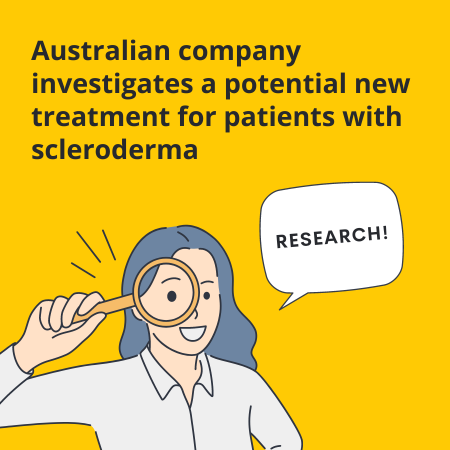What is scleroderma?
Scleroderma or systemic sclerosis, is a chronic connective tissue condition. It is generally classified as one of the autoimmune rheumatic conditions.
One of the common symptoms is the thickening or hardening of the skin. It comes from the Greek: sclero = hard, derma = skin.

6th March 2024
60+ locations across Australia
The term systemic sclerosis tells us more about the condition
Scleroderma can cause serious damage to:
lungs
heart
kidneys
gastrointestinal tract.
As such, it is often called a multi-system condition. It can be life-threatening.
What scleroderma is not…
Scleroderma is not contagious, infectious, cancerous or malignant.
What are the different types of scleroderma?
Scleroderma varies widely in different patients, with some having only very minor problems, while others can have a very serious illness. The majority of patients has the milder condition.
There are two types of scleroderma – limited and diffuse. The extent of skin involvement is used to divide patients into these two groups.
Limited scleroderma
Limited scleroderma usually causes Raynaud’s phenomena and hardening of the skin in the hands. Other internal organ involvement can occur, usually over a period of many years with the condition. About 70% of people with systemic scleroderma have limited scleroderma.
Diffuse scleroderma
Diffuse scleroderma can affect the skin on the hands, forearms, trunk, upper arms and thighs. Patients with this condition often have a more systemic condition affecting other organs and tissues. They can require more intensive treatment. Approximately 30% of patients have the more diffuse form.
Although most patients can be classified as having either limited or diffuse scleroderma, different people may have different symptoms or combinations of symptoms.
Who gets scleroderma?

Gender
Scleroderma affects both sexes, but it is three to four times more common in women.

Age
It can occur at any age, with the peak incidence between 40 – 60 years. It is rare in children.

Racial Group
It has been reported in most countries throughout the world and in most racial groups. It is less common in Africa and Polynesia.

Heredity
The condition is not inherited at birth and it only rarely occurs in more than one member of a family.
Research & Treatment
Hear from Dr Jo Sahhar and Specialist Scleroderma Nurse Kathleen Elford talking about their experiences of working with Scleroderma Patients.
see our latest posts
News and events
Amanda
07 June, 2024
Support us
There are more than 6000 people with scleroderma in Australia
Donate now to help improve lives!






